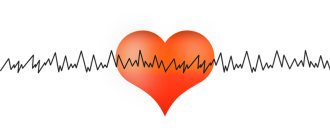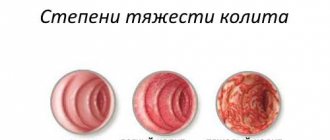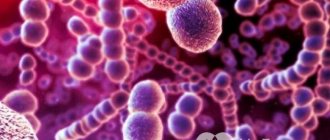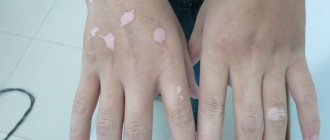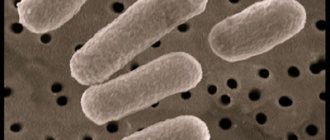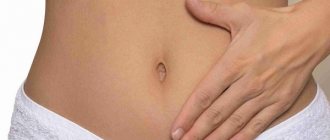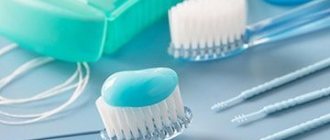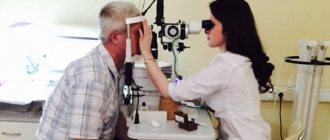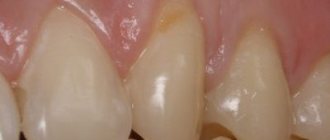Mastitis (breast) is an inflammatory disease that occurs in the breast tissue of females aged 15-45 years. Most often, breastfeeding develops in women during lactation. However, it happens that mastitis can also appear in women outside the lactation period. It is extremely rare that pathology can develop in men and children.
Causes of mastitis in a nursing mother
Each mother, after being discharged from the maternity hospital, receives certain recommendations from her doctor. One of these recommendations is how to prevent mastitis from occurring. But, nevertheless, the disease begins to develop for the following reasons:
- Consequences of milk stagnation in the mammary glands (lactostasis). There are two factors of occurrence: the first is the baby’s infrequent attachment to the breast, and the second is that milk is produced in large quantities.
- Weakened immune system. Against this background, the body of a nursing mother is very vulnerable, and there is a danger of contracting various infections.
- Infection that enters through cracks in the nipples (appears when the baby does not latch on to the breast correctly).
- Wearing a tight bra. The result of wearing such underwear is stagnation of milk, because due to an incorrectly selected bra, compression occurs in some areas of the mammary glands.
- Hypothermia (this mainly applies to the off-season).
- Stress.
- Intense physical activity.
- Mastitis can be a complication after a prolonged cold while breastfeeding.
- Surgical intervention.
- Chest injury.
- Improper personal hygiene. Lactation mastitis can be caused by both rare and frequent hygiene procedures. Insufficient care can cause the entry and growth of staphylococcal, streptococcal, and fungal microorganisms, which leads to the development of postpartum mastitis. Frequent water procedures can also lead to cracked nipples, and therefore the disease will begin to develop.
- Drinking liquid in small quantities.
- Presence of a tumor in the chest.
But the most important reason why females develop breastfeeding is the attachment of an infectious pathogen to advanced lactostasis.
Prevention
The main measure to prevent the development of mastitis is, of course, to prevent the appearance of lactostasis. First of all, to maximize the emptying of the milk ducts, it is necessary to establish a feeding regimen for the newborn. The baby should be put to the breast when he wants to eat (at the first hungry cry). In other words, it is recommended to feed the child freely, and not by the hour. After each feeding, be sure to express excess milk.
The second important preventive measure is preparing the nipples for feeding in the last months of pregnancy and caring for them during lactation. Before the birth of the baby, the nipples and their areolas should be carefully massaged, and absorbent pads should be used in the bra to prevent the nipples from coming into contact with the underwear. By the way, a nursing mother should change her bra every day, as drops of milk may remain on it after putting the newborn to the breast. At the end of each feeding, the breasts should be washed with a weak soap solution, the nipples should be lubricated with petroleum jelly, and if cracks form, they should be treated with antiseptic ointments. Finally, a nursing mother should monitor her general health: maintain a daily routine, eat rationally, and prevent the occurrence of infectious diseases.
From all of the above, the conclusion is obvious: mastitis is a very serious pathology, which can be aggravated by purulent inflammation of the mammary glands in literally 4–5 days. Therefore, it is important to prepare for the lactation period in advance and with maximum responsibility. Then the child’s happy birthdays will not be overshadowed by any complications, including mastitis.
Source
Signs of mastitis while breastfeeding
Breastfeeding always develops against the background of untreated lactostasis, the duration of which exceeds three days. As a rule, the disease is acute. The main symptoms appear within a few hours.
Symptoms of mastitis development:
- Breast milk production decreases.
- Aching pain in the chest is felt both during breastfeeding and after.
- Temperature from 38ºС.
- Intoxication of the body manifests itself - chills, weakness, headache.
- The skin of the breast becomes red and hot to the touch.
- Painful sensations when you touch the inflammation on the mammary gland with your hand.
Most often, in nursing mothers, breastfeeding develops in both mammary glands, which actually complicates the process of restoring lactation.
IMPORTANT! Unlike lactostasis, with mastitis it is not recommended to put the baby to the breast. The thing is that breast milk, both from infected and healthy breasts, contains a huge number of pathogenic microorganisms, which, once in the child’s gastrointestinal tract, can cause serious illness. In addition, the basis of treatment for mastitis is taking antibiotics; therefore, when feeding, they enter the baby’s body through breast milk.
Breastfeeding tips
The issue of continuing breastfeeding during mastitis is individual for each woman. Only the attending physician can resolve this issue after a preliminary examination.
A categorical contraindication is the presence of an infectious focus in the mammary gland. After taking antibacterial drugs, breastfeeding can be resumed only after some time, and subject to negative test results.
If a woman has undergone surgery, breast milk must be expressed and pre-boiled. Feeding is done from a bottle. Breastfeeding can be continued only if mastitis was caused by stagnation of breast milk (lactostasis) without infection.
Stages of disease development and possible complications
In infants, three stages of development can be distinguished:
- Serous (initial)
- Infiltrative.
- Purulent.
Each stage has its own symptoms and treatment features.
Symptoms of the serous stage:
- a sharp increase in temperature;
- chest pain;
- a feeling of cold accompanied by muscle tremors;
- Redness of the skin is observed at the site of the lesion.
At this stage, the disease is caused by inflammation, which is formed due to stagnation of milk. In this case, it is necessary to begin treatment as quickly as possible, otherwise the infection in the body will begin to rapidly develop and develop into infiltrative mastitis.
Symptoms of infiltrative mastitis:
- constant weakness;
- feeling of pain during feeding;
- lymph nodes in the armpits become enlarged;
- painful sensations when pressing the mammary gland;
- lumps are felt in the chest;
- poor milk flow.
If you ignore treatment at this stage, the next stage will begin to develop – purulent.
How and with what to treat?
Before running to the pharmacy for the first antibiotics you come across, it would be a good idea to notify the doctor who monitored your pregnancy, mammologist and local therapist. Timely consultation with a doctor will allow you to avoid the third and most terrible, fourth stage of the disease.
The doctor will send you for an examination using ultrasound, write a list of necessary tests, in particular, this is a study on the sterility of milk culture, CBC, identifying the body’s reaction to certain antibiotics. But, since the tests can take, say, a week, and the days count in the literal sense of the word, the attending physician, who has determined the degree of mastitis, will immediately give you the necessary recommendations and a list of necessary antibiotics.
Depending on the stage of the disease, medication may be prescribed in the form of intravenous or intramuscular antibiotics. At an early stage, treatment with tablets such as Ciprofloxacin, Amoxiclav, etc. is possible. Also, during the period of treatment, the nursing mother is prescribed drugs that suspend lactation (Oxytocin, Parlodel, Bromocriptine).
Antibiotics for breastfeeding - read here
But while there is milk, something needs to be done with it, namely, express (read how to express properly). Naturally, during the period of illness, the baby should be weaned: such milk does much more harm to the child than good.
How to return to breastfeeding after a break
Purulent mastitis in a nursing woman
In the third and fourth stages, alas, surgical intervention cannot be avoided. To prevent serious consequences, for example, removal of the mammary gland, a purulent abscess is opened in a surgical hospital. The operation is performed entirely under anesthesia .
Antibacterial therapy is also prescribed plus - droppers with glucose and saline solution, which reduce the general intoxication of the body after the inflammatory process, immunoglobulins to increase immunity. After 7-10 days, you will need to take a second test to identify infectious agents, as well as to determine the sterility of the milk.
What not to do
If the doctor has diagnosed mastitis, then it is prohibited to do the following:
- Massage and knead your breasts.
- Express milk for longer than 30 minutes, otherwise the swelling will become even worse.
- Warm the chest with warm compresses, take a warm shower, because even a small local thermal effect on the chest can increase inflammation, especially if there is an increase in body temperature.
- Alcohol and alcohol-containing medicinal dressings. Firstly, alcohol warms, therefore, the inflammatory process worsens. Secondly, alcohol, even if used externally, reduces the production of oxytocin, which also leads to a complication of the process.
Separately, it is worth noting how much liquid a nursing mother who has been diagnosed with mastitis should consume. Doctors recommend that a nursing mother drink as much as she wants, distributing it into small portions if possible. The drink itself should be slightly cool or at room temperature, because drinking hot liquid in large portions can cause an additional, often painful flow of milk.
Treatment of mastitis
When the first symptoms of breastfeeding are detected, a woman should immediately go to see a specialist for advice, but under no circumstances should she undergo treatment on her own. Today, there are the following areas of treatment for breastfeeding mothers:
- Conservative (drug) therapy.
- Surgical intervention.
- Traditional medicine recipes.
Conservative (drug) therapy
Conditions when doctors use conservative therapy to treat mastitis:
- If the patient's general condition is satisfactory.
- No more than 3 days have passed since the first signs of the disease appeared.
- The temperature does not rise above 37 °C.
- There are no symptoms of a purulent-inflammatory process.
- Unpleasant feeling in the chest.
- Blood tests are practically without deviations.
Classification
There are several types of this disease, which differ from each other in their course, symptoms and methods of treatment. Postpartum (lactation) mastitis is divided into several stages, which are also types of mastitis
Fibrous mastitis
Occurs due to other types of mastitis. It is a violation of the histological structure of the gland. Due to the occurrence of pathologies of breast cells, fibrous tissue is formed, that is, connective tissue, which gradually grows. Seals appear in the gland.
If a woman suffers from gynecological diseases, then the chance of developing fibrous mastitis is very high.
Non-lactation mastitis
This disease is of bacterial origin and most often does not develop during breastfeeding. Non-lactation mastitis occurs during a period of hormonal changes in the body, which contributes to a decrease in immunity, and, as a result, leads to diseases of the mammary glands. Non-lactation mastitis often becomes chronic.
Mastitis in pregnant women
This is a disease that is very rare, but requires immediate action.
The development of the disease can be unilateral or bilateral. Breast mastitis can be infectious or non-infectious. The course of the disease is most often acute, very rarely chronic.
In a woman who suffers from immunodeficiency diseases or endocrine diseases, it becomes very extensive and affects the entire mammary gland. Its flow accelerates and very quickly turns into acute forms.
Chronic mastitis
Very rare. Limited foci of inflammatory processes with poor outflow appear. Most often this happens in the case of incorrectly carried out or incomplete treatment with antibacterial drugs. Chronic mastitis is dangerous to a woman’s health and leads to serious complications that are treated with surgery.
Usually this disease develops after lactostasis.
Lactostasis is the stagnation of milk in the mammary glands.
In order to distinguish infectious mastitis from lactostasis, it is necessary to express.
The disease develops in 3 stages:
- Serous stage. Due to constant stagnation of milk, a woman’s general health deteriorates. First manifestations: the nipple swells and tension occurs in the entire mammary gland. The temperature rises to 38-39 degrees, chills and weakness begin. Characterized by pain in the mammary glands. If the temperature immediately decreases and the general condition improves, this is lactostasis. Another way to distinguish between these 2 conditions is to monitor body temperature from the inflammatory side and from the healthy side. The body temperature on the inflamed side will be significantly higher than on the healthy side. A complete blood count shows leukocytosis and increased erythrocyte sedimentation rate.
- Infiltration stage. The pain becomes even more pronounced. Even with a light touch, acute pain occurs. Symptoms from the previous stage are either completely preserved or intensified. The general condition worsens and weakness and lethargy occur. The body temperature is steadily elevated and no jumps are observed. Redness of the skin in areas of inflammation and the appearance of compactions are possible. Headache and general weakness occur. The blood picture shows even greater leukocytosis.
- Purulent stage. This is the most severe stage of the disease, which is characterized by the appearance of severe redness of the skin at the site of the seals. Pronounced swelling of the mammary gland appears and pain intensifies. The body temperature of nursing mothers increases significantly and becomes 39-40 degrees. Sudden changes in temperature are possible, when it sharply drops to normal or slightly elevated, and then rises again to very high levels. At the same time, the symptoms of fever also become more pronounced. Sweating increases and chills become very severe. Intoxication is pronounced. There is a urge to vomit, severe nausea and loss of appetite. Purulent mastitis is very easy to detect using an ultrasound procedure. You can also use the biopsy method. Mammography and computed tomography are also excellent at detecting this disease.
Suppurative mastitis can develop into an abscess when a cavity filled with pus forms under the skin.
With prolonged absence of treatment, phlegmon forms, the treatment of which is carried out only by surgical methods.
The stages of mastitis flow into one another, so it is not always easy to determine which specific stage is currently occurring.
Hidden mastitis
It manifests itself as a severe disorder of the functions of the mammary gland. Latent mastitis is characterized by increased calcium and potassium content in milk. It occurs without symptoms.
Prenatal mastitis
Associated with various pathological processes in the female body, as well as endocrine diseases.
The classification of mastitis is very diverse. It makes it easy to identify exactly what type of non-lactation or lactation mastitis has affected a woman.

